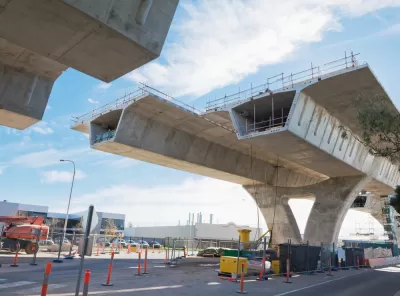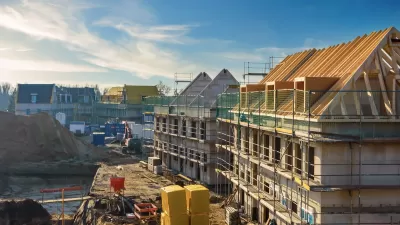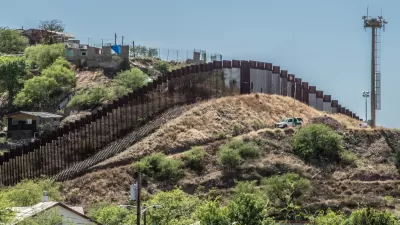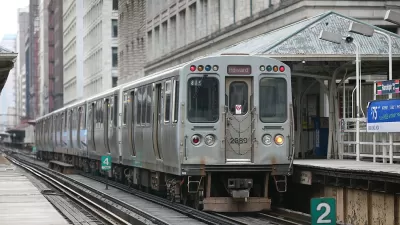Rebuilding America's infrastructure, as promised on the campaign trail and in the first year and a half of the Trump Administration, will get a lot harder when the price of steel has gone up by 40 percent since the beginning of 2018.

David A. Lieb reports on the effects of the Trump Administration's trade policies on infrastructure investment projects and programs around the United States.
Steel prices have risen sharply since the Trump Administration instituted tariffs on steel imports in March, according to Lieb. While some projects are under construction with pre-tariff prices locked in, projects in the pipeline aren't so fortunate. Lieb references the Kansas City streetcar extension, a bridge project over the Mississippi River in St. Louis, and highway construction programs in Rhode Island and Pennsylvania to exemplify projects that are re-evaluating their plans in light of the new prices for steel.
There's also the specter of President Trump's proposed (but likely dead on arrival) $1.5 trillion infrastructure plan. The article implies, with some degree of subtlety, that Trump's trade policies are making Trump's infrastructure promises impossible.
FULL STORY: Trump’s own tariffs make it harder to rebuild infrastructure

Planetizen Federal Action Tracker
A weekly monitor of how Trump’s orders and actions are impacting planners and planning in America.

Restaurant Patios Were a Pandemic Win — Why Were They so Hard to Keep?
Social distancing requirements and changes in travel patterns prompted cities to pilot new uses for street and sidewalk space. Then it got complicated.

Map: Where Senate Republicans Want to Sell Your Public Lands
For public land advocates, the Senate Republicans’ proposal to sell millions of acres of public land in the West is “the biggest fight of their careers.”

Orange County, Florida Adopts Largest US “Sprawl Repair” Code
The ‘Orange Code’ seeks to rectify decades of sprawl-inducing, car-oriented development.

Maui's Vacation Rental Debate Turns Ugly
Verbal attacks, misinformation campaigns and fistfights plague a high-stakes debate to convert thousands of vacation rentals into long-term housing.

San Francisco Suspends Traffic Calming Amidst Record Deaths
Citing “a challenging fiscal landscape,” the city will cease the program on the heels of 42 traffic deaths, including 24 pedestrians.
Urban Design for Planners 1: Software Tools
This six-course series explores essential urban design concepts using open source software and equips planners with the tools they need to participate fully in the urban design process.
Planning for Universal Design
Learn the tools for implementing Universal Design in planning regulations.
Heyer Gruel & Associates PA
JM Goldson LLC
Custer County Colorado
City of Camden Redevelopment Agency
City of Astoria
Transportation Research & Education Center (TREC) at Portland State University
Camden Redevelopment Agency
City of Claremont
Municipality of Princeton (NJ)





























